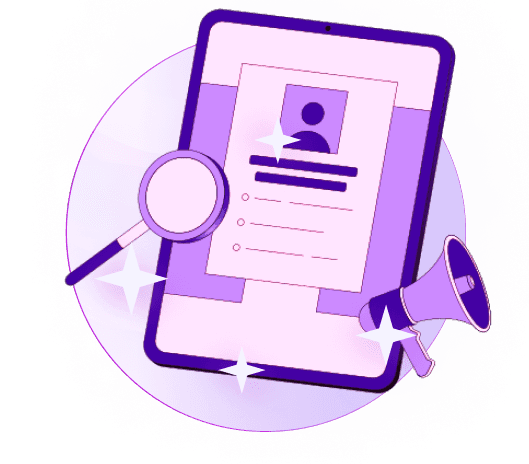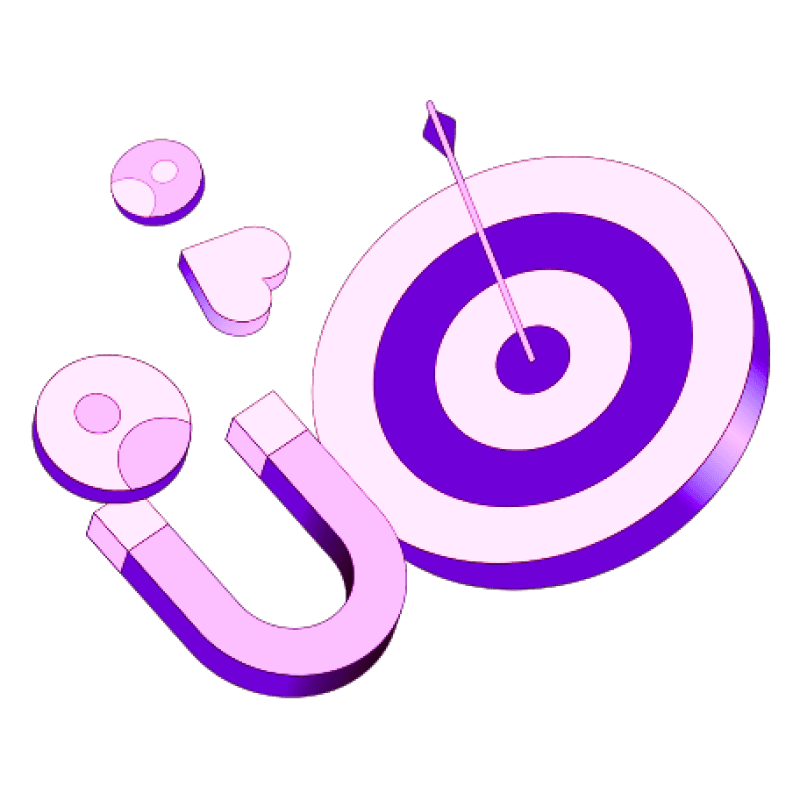Blogs
Articles

How to Build Your First AI Marketing Automation System (Even as a Beginner)
AI tools help 90% of marketing professionals automate customer interactions. Marketing automation with AI has enabled 88% of them to personalize their customer's experience across channels.
Getting started with AI in marketing automation might seem daunting if you're new to the technology. This piece will guide you through building your first AI marketing automation system from scratch. You'll learn the basics, see real-life examples, and follow simple steps to implement marketing automation with AI. We designed everything with beginners like you in mind.
Want to launch your campaigns 75% faster? Let's tuck in!
Understanding AI in Marketing Automation
The AI marketing market will grow from USD 15.84 billion in 2021 to USD 107.50 billion by 2028. This remarkable growth shows how AI transforms marketing practices. Let's learn about what AI marketing automation means and why businesses can't ignore it anymore.
What is AI marketing automation?
AI marketing automation uses artificial intelligence technologies to optimize marketing processes through data analysis, machine learning, and natural language processing. AI marketing systems stand apart from basic automation tools. They can analyze big data sets to spot patterns, predict what customers might do, and make decisions instantly without human help.
AI marketing automation blends smart technology with human creativity to:
Learn from and understand modern customers at an individual level
Deliver individual-specific, relevant communications
Make use of information to uncover hidden patterns and insights
Optimize repetitive tasks like email campaigns and social media management
One industry expert puts it this way: "AI marketing uses artificial intelligence technologies to make data-driven decisions and automate marketing tasks based on data collection, analysis, and observations of audience trends".
How it is different from traditional automation
Traditional marketing automation runs on rule-based systems—specific actions trigger preset responses, like sending an email when someone subscribes. AI takes this further with analytical insights, immediate decision-making, and knowing how to learn and get better over time.
AI marketing platforms create strategies and analyze data much faster than humans. They do this through machine learning algorithms that learn from past customer behavior. Traditional automation just follows preset rules, while AI brings adaptable intelligence.
The biggest difference shows in AI's power to do more than just execute tasks. AI orchestrates marketing. It coordinates complete marketing workflows and adjusts based on results and customer actions.
Why it matters in 2025 and beyond
Organizations will deploy more AI agents by 2025. These autonomous systems will optimize, scale, and personalize marketing at new levels. Marketing teams can focus on strategy and creativity instead of routine tasks.
AI now handles advanced functions like campaign optimization and real-time personalization. AI systems will manage tasks that once needed full teams, such as competitor analysis or audience segmentation. This changes what small teams can achieve.
AI marketing automation in 2025 will tackle complex workflows on its own. Companies will spend less while their customers' experiences improve. Businesses that adapt quickly will gain advantages through more targeted, efficient, and effective campaigns.
Top Use Cases of AI in Marketing Automation
AI marketing automation is changing how businesses connect with customers through specialized applications. Let's look at the most meaningful use cases that are reshaping marketing operations today.
Predictive lead scoring
AI algorithms analyze customer data to identify leads with the highest conversion potential. Sales teams using AI report 98% improvement in lead prioritization. These systems look at CRM data, behavioral patterns, and social interactions to assign scores that show conversion potential. B2B companies have doubled their lead-to-appointment conversion rates after implementing these systems.
Personalized email campaigns
Personalized emails generate 6x higher transaction rates, 29% higher open rates, and 41% higher click-through rates compared to generic messages. AI looks at customer data to customize content, sending times, and product recommendations. The system can fill emails with items picked for each customer based on their priorities and adjust frequency based on engagement levels.
Live campaign optimization
AI enables quick campaign adjustments based on performance metrics through live data processing. Marketing teams can move budgets from underperforming placements to high-impact ones. This dynamic approach helps marketers spot trends and respond to market changes right away, which cuts down on wasted spend.
Automated content generation
AI content creation tools make workflows smoother and help overcome creative blocks. About 58% of marketers using generative AI see better content performance, and 54% report cost savings. These systems create text, images, and videos for specific audiences and turn hours of work into minutes.
Customer segmentation and targeting
AI goes beyond basic demographic segmentation by looking at purchasing behavior, online interactions, browsing history, and sentiment analysis. It builds detailed customer profiles for precise targeting by processing multiple data points at once. AI customer segmentation tools have pushed clickthrough rates, conversion rates, and retention rates substantially higher.
Chatbots and conversational AI
AI-powered chatbots help customers 24/7 with instant responses. They handle data collection and share product information, which lets human teams focus on complex tasks. Starbucks uses chatbots to take orders through messaging, making sales faster and easier.
Performance monitoring and reporting
AI reporting tools give practical insights by tracking engagement, bounce rate, and conversion rate across channels. These tools analyze data live to speed up decision-making. They can predict ROI for future campaigns by monitoring each step in a customer's trip.
Data integration and anomaly detection
AI processes massive data sets to find unusual patterns. This helps marketers learn about hidden issues and opportunities that humans would take months to find. Live anomaly detection systems alert teams to unexpected product buzz, which allows quick responses to social media activity.
Choosing the Right AI Tools for Your Needs
Your AI marketing automation stack needs the right tools that line up with your business goals. Companies see 68% better SEO and content marketing ROI when they use AI. Here are the key tool categories to build your marketing automation foundation.
AI-powered CRM and email tools
A powerful customer relationship management system forms the core of marketing automation. Modern AI-enhanced CRM platforms do more than store contacts—they predict customer needs by analyzing their behavior. Salesforce Einstein AI uses machine learning to spot patterns that show potential customer churn. HubSpot brings marketing, sales, and support together in one platform with AI-powered suggestions.
Seventh Sense helps with email marketing by creating models that find the best time to send campaigns to each contact. These tools update customer records and send follow-ups automatically.
Analytics and reporting platforms
Smart marketing relies on analytical insights. Semrush Copilot looks at data from multiple tools to give tailored SEO recommendations. Tableau smoothly combines various data sources to deliver reliable business intelligence. This proves especially useful for companies of all sizes that need detailed analytics.
DashThis and Google Analytics help teams build custom dashboards that show metrics from all marketing channels. These platforms eliminate the tedious task of manual data handling.
Content generation and SEO tools
Optimized, engaging content is vital for modern marketing success. Writesonic works with tools like Ahrefs and Semrush to simplify SEO processes and optimize content for both Google and AI-powered search engines. SurferSEO studies competitors and offers solid recommendations based on analytical insights.
Clearscope checks how well text matches what people search for without overdoing optimization. Frase creates content briefs from top pages and suggests headings and keywords.
Social media automation platforms
Social channels need regular engagement and monitoring. Buffer's AI writing assistant offers caption templates for different platforms and tracks your best-performing posts. Hootsuite's OwlyWriter creates posts from URLs and lets you handle all platform messages in one place.
ContentStudio predicts post performance to maximize engagement and uses smart posting rules that check engagement before taking next steps.
Visit Persana.ai to learn how these tools can work together in a marketing automation system that fits your business needs.
Getting Started with AI Marketing Automation
Success with AI marketing automation needs proper planning rather than rushing in. Here are the simple steps to set up your first system properly.
Assess your data readiness
The saying "garbage in, garbage out" rings true for AI projects. Your AI marketing automation needs clean, high-quality data as its foundation. Take time to review your data sources, fix quality problems and build the right connections. Good data readiness means your data shows all aspects of the use case – the patterns, errors, and outliers your AI model needs to run or train. Your AI tools can't give accurate insights without a universal data layer that combines data from your CRM, ad platforms, and analytics tools.
Start with one use case
The best approach to AI marketing automation is like a mouse eating an elephant—one small bite at a time. Pick one specific use case for your AI marketing strategy, like customized offers or predictive analytics. Set clear goals to track how well it works. Don't try to do everything at once. Pick a small, repetitive task you can automate. Small time savings add up quickly when multiplied! You could start by automating creative asset tagging or sending questions to the right people.
Check out Persana.ai to learn how focused use cases are the foundations for better automation later.
Train your team on AI tools
AI tools work best when people know how to use them properly. Give your team simple AI education, find AI champions in your company, and provide focused training. Real-life applications and hands-on learning sessions work great together. Team members build confidence quickly when they use AI tools in actual project workshops.
Let them start with small projects and get comfortable. This helps them see AI as helpful rather than threatening.
Monitor and optimize continuously
Your AI-driven campaigns need constant testing and improvement based on performance data. Know what success means before you build anything. Keep track of important metrics like engagement rates, conversion rates, and ROI. You can't improve what you don't measure. AI tools get better with more data. Make optimization part of your routine by checking performance dashboards often.
Conclusion
AI marketing automation represents a fundamental change from simple rule-based systems to intelligent, adaptive marketing ecosystems. This piece explores how AI reshapes marketing operations—from predictive lead scoring to individual-specific campaigns and live optimization. These capabilities are now accessible to both beginners and experienced marketers.
You don't need massive overhauls or complete system replacements to start your AI marketing automation experience. Pick one focused use case to begin with. Keep your data foundation solid and expand gradually as your team builds confidence with these tools. It's worth mentioning that success depends on clean data, clear objectives, proper team training and continuous optimization.

Create Your Free Persana Account Today
Join 5000+ GTM leaders who are using Persana for their outbound needs.
How Persana increases your sales results
One of the most effective ways to ensure sales cycle consistency is by using AI-driven automation. A solution like Persana, and its AI SDR - Nia, helps you streamline significant parts of your sales process, including prospecting, outreach personalization, and follow-up.



